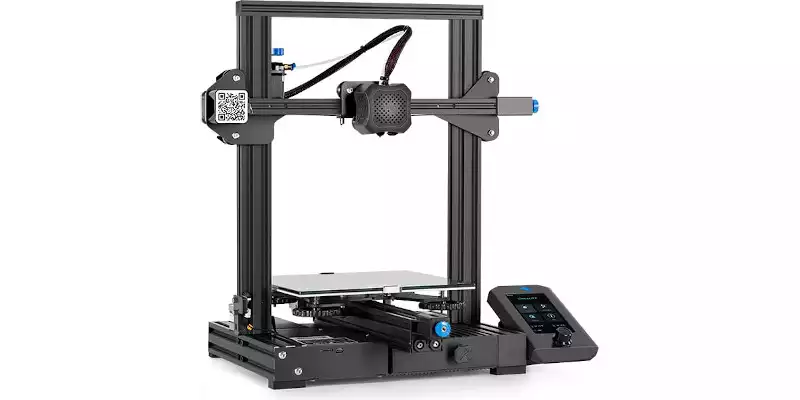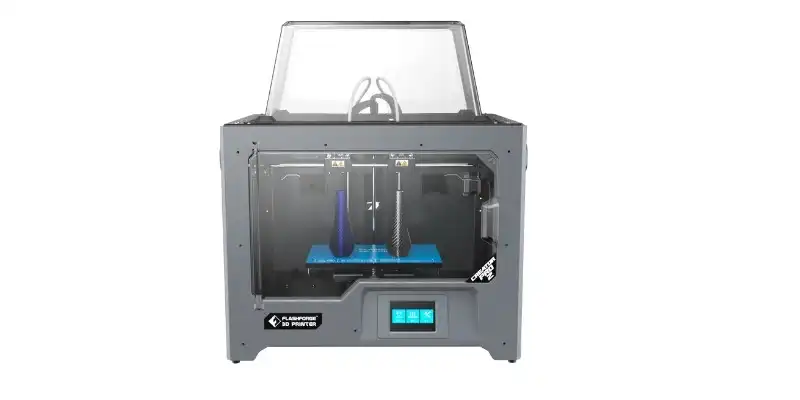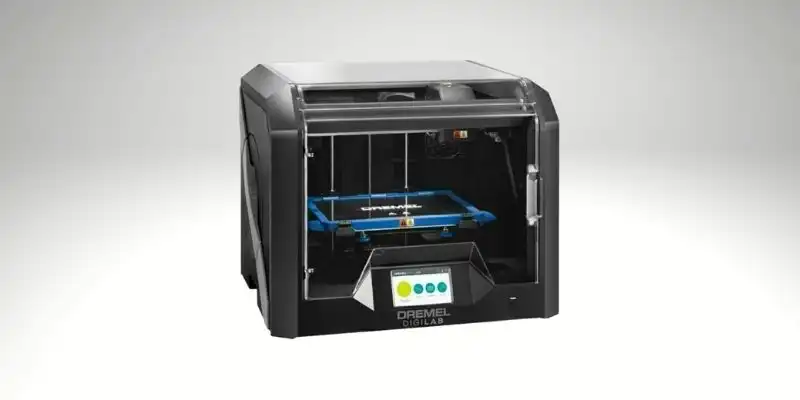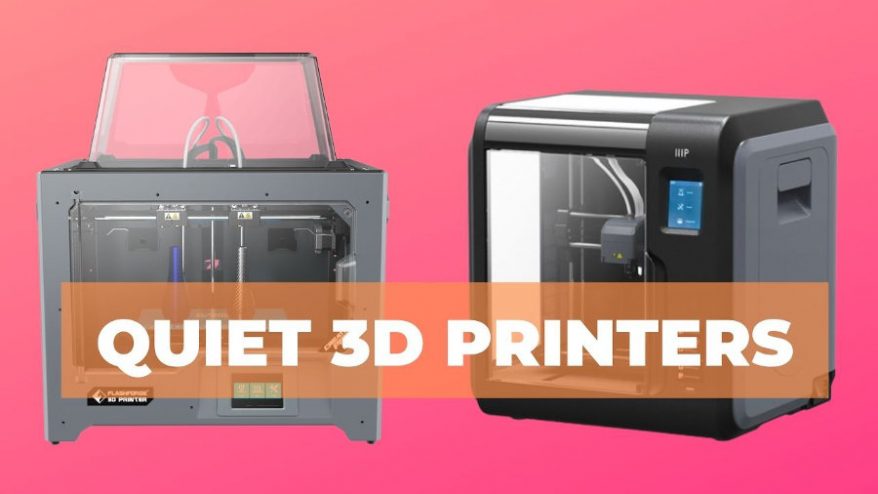
If you’ve ever had a neighbor decide to try their hand at DIY at stupid o’clock in the morning, or been woken by roadworks outside your home, then you’ll know just how loud machines can get. Tools like jackhammers, drills, and lathes that create, destroy, and modify materials often make a significant amount of noise, in the same way that noisy 3D printers are the bane of late-night workers or fans of quiet.
With an average noise of around 50-60 decibels, or around the volume of someone trying to be heard over a TV, it’s easy to see why they can be a bit of a nuisance, especially for longer projects. Motors and fans can rack up a high decibel count even in less powerful machines.
|
|
|
|
|
$279.99
|
$549-999
|
$1999
|
And so, a lot of people have tried to find out how to make a 3D printer quieter.
We’ve already seen in cars and trains that once-noisy motors and machines can be made a lot quieter than they were, and engineers are always looking to make our technology less and less disruptive.
A quiet 3D printer isn’t a pipe dream anymore, and if you’ve used some noisier models before, you’ll be happy to know that some of the best quiet 3D printers are very affordable too. We’ll even look at ways to make your own machine a little more tolerable when in use.
3D Printer Noise: Why is it Bad?
A 3D printer’s noise isn’t normally a dealbreaker for most people. Compared to CNC routers, vacuum cleaners, and even older washing machines, they’re not so bad. The problem is how long the noise can go on for.
When vacuuming, you know when it’s going to end, and appliances like washing machines are easily ignored because they’re usually several rooms away (or in the basement if you’re lucky) and so don’t cause much disruption or irritation.
3D printers are more of a pain because of both their constant noise when in-use as well as the average user’s proximity to them. If you’re like me, then you have your 3D printer set up in your workspace for easy communication with your PC.

The whirring of a motor gets very annoying very quickly, like a car left running outside your bedroom window. Quite often, a quiet 3D printer is a popular 3D printer, and some of the quietest 3D printers are highly praised for their gratifyingly noiseless processes.
If you work late at night or have particularly sensitive neighbors, then you’re going to want to either find the quietest 3D printer you can or learn how to make your 3D printer quiet.
Best Quiet 3D Printers
If you’re in the market for a new 3D printer and prioritize silence, then you’ll find a lot of 3D printers on the market tend to brag about their noise reduction. But like every pizza place saying they’re the best, you can’t always trust the word of the manufacturer.
Here are some of our picks for the best quiet 3D printers that don’t skimp on overall quality for the sake of silence. Whether you work better at night or just appreciate the peace, you’ll want to take a look at these models.
3DSourced is reader-supported. When you buy through links on our site, we may earn an affiliate commission. Learn more
1. Creality Ender 3 V2 — Upgradable with silent mainboard for quiet 3D printing
- Price: $279 — Available at Creality Official store here / Amazon here
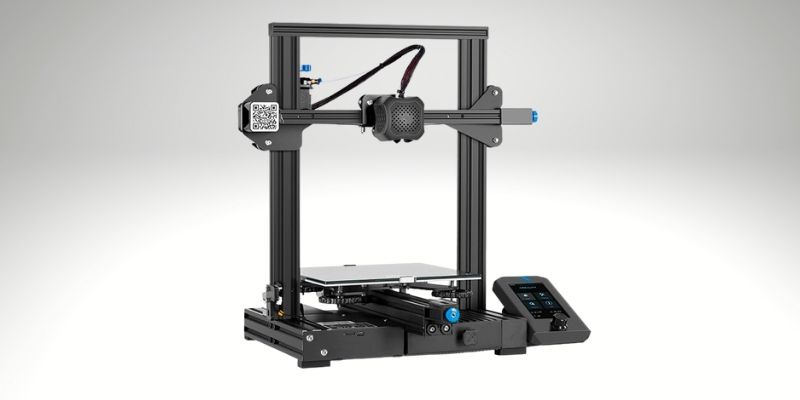
Pros
Smooth, user-friendly, and affordable.
One of the best 3D printers around.
Very modifiable.
Can reduce the noise by upgrading it with a silent motherboard.
Cons
There are better printers available with more features.
The Creality series of 3D printers are renowned for smooth, user-friendly printers and almost unparalleled affordability in the 3D printing market.
The Ender 3 V2 is one of the best quiet 3D printers around, though many have commented on how the fan is a lot more susceptible to wear over time than others, becoming almost uncomfortably noisy with fairly constant medium-term use.
Fortunately, the Ender series is well known for modifiability, especially the Ender 3, Ender 3 Pro, and Ender 3 V2.
You can reduce the 3D printer’s noise by upgrading it with a silent mainboard, like this one here, or hot end fan replacements like this.
All-in-all, the Ender 3 series, especially the V2, are fairly quiet machines, but that’s not to say they’re silent 3D printers. What makes them some of the best quiet 3D printers around isn’t how they come out of the box, but how easy they are to silence with just a little bit of tweaking.
On this topic: our guide to Ender 3 upgrades
2. Artillery Sidewinder X1
- Price: $419 — Available on Amazon here
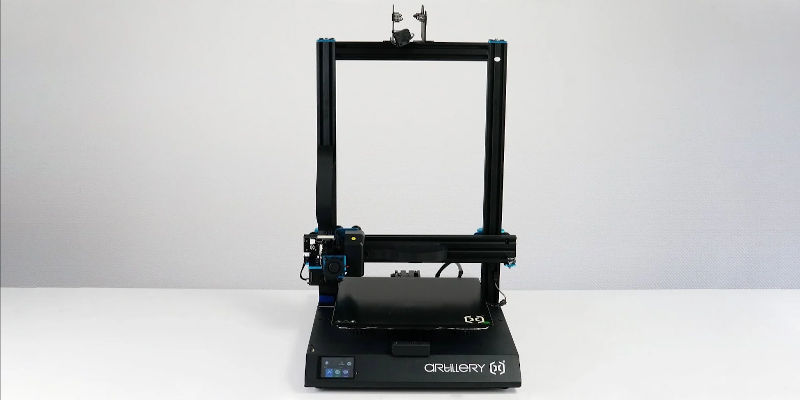
Pros
True reliability.
Good volume and usability.
Incredibly safe and won’t ruin your prints.
Cons
Measures at an average of 55 decibels.
If you want true reliability in a quiet 3D printer, then the Artillery Sidewinder X1 is the choice for you. While it measures at around 55 decibels (the average for a 3D printer), it’s the best in terms of both volume and usability.
With two measures of fault detection in place, the Artillery X1 is incredibly safe and won’t ruin your prints in the event of overheating or a clog. It’s an incredibly quiet 3D printer for having an open build area and comes mostly pre-assembled.
3. Monoprice Voxel — one of the quietest low-cost 3D printers
- Price: $399 — Available on Amazon here
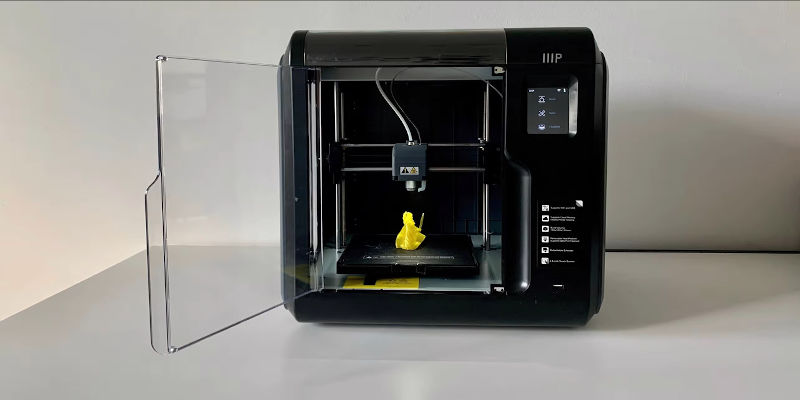
Pros
Very reliable for beginners.
Has easily replaceable parts and a reliable WiFi connectivity option.
Cons
Similar in power and build size to the cheaper Flashforge Adventurer 3.
The Monoprice Voxel is often compared to the aforementioned Flashforge Adventurer 3. They have the same build size and are relatively similar in power.
The Monoprice Voxel also operates between 45 and 50 decibels when in use, and is very reliable as a machine for beginners who want to know they’re getting a good quality machine that won’t need constant reviews of the instruction manual to work.
When it comes to maintenance and upgrades, the Monoprice has easily replaceable parts and a reliable WiFi connectivity option, meaning you can keep it in a different part of the house if the noise is still a little too much.
4. Flashforge Printers
- Flashforge Finder: $299 — Available at Flashforge here
- Flashforge Creator Pro 2: $699 — Available on at Flashforge here
- Flashforge Adventurer 3: $369 — Available at Flashforge here

Pros
Reliable, multi-purpose 3D printers.
Fairly quiet as far as 3D printers go.
Good for personal and professional users all around the world.
Cons
The creator Pro 2 is relatively loud.
Advertised as a “noiseless” 3D printer, when it isn’t.
Flashforge is a household name in 3D printing, and is known for its line of reliable, multi-purpose 3D printers that have found both personal and professional users all over the world.
When it comes to quiet 3D printers, two of their models stand out amongst the crowd; the Creator Pro 2, and the Finder.
The Flashforge Finder is the most beginner-friendly 3D printer on this list. Fully assembled out of the box and very quick to set up, it’s an ideal choice for those of you who want a quiet 3D printer without needing modification or experience.
While advertised as ‘noiseless’, the Finder has a maximum volume of 50 decibels when working normally, which is fairly quiet as far as 3D printers go, but it can’t be considered a silent 3D printer.
For those of you who want a comparatively upgraded machine, the Flashforge Creator Pro 2 is a little noisier than the Finder (working at 55 decibels), but is a far more capable machine. The relatively quiet nature of the Creator Pro 2 is incredibly impressive when you take its hardware into consideration, which is capable of high-quality prints from a very easy-to-use machine.
As well as its fully enclosed build area, the all-metal frame of the Creator Pro 2 adds to its general sturdiness, significantly reducing the noise from vibrations.
If both of these sound good to you, but silence is your main focus, then you might enjoy Flashforge’s middle-ground offering, the Adventurer 3. At only 45 decibels, it’s amazingly quiet for a 3D printer, and can handle some pretty complicated prints.
Read more: Creator Pro vs Creator Pro 2
5. Dremel Digilab 3D45 — almost silent 3D printer
- Price: around $1,600 — Available at Matterhackers here / Available at Dynamism here / Amazon here
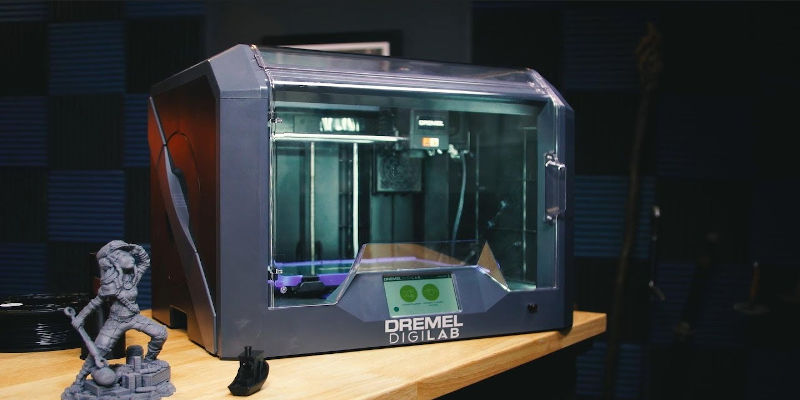
Pros
A great addition to any workspace to make it as noise-free as possible.
Has an enclosed build area and a solid reputation for quality and user-friendliness.
No-nonsense machine.
Cons
Isn’t as quiet compared to many 3D printers on the market.
Dremel make some of the quietest 3D printers around, and the 3D45 is a great addition to any workspace that you want to keep as noise-free as possible.
Digilab has an enclosed build area and a solid reputation for quality and user-friendliness. Ready out of the box, it’s great for beginners, and even has a built-in filament sensor for all compatible materials.
This no-nonsense machine operates at an average of 50 decibels, roughly the sound of an average person talking, it’s far below the 70 decibels that are considered damaging to human hearing over long periods even at a slight distance.
The Dremel Digilab isn’t just quiet compared to many 3D printers on the market, it’s also highly praised for its reliability and easy usability.
How to Make a 3D Printer Quiet
Some 3D printers make more noise than others depending on variables like the 3D printer part quality, or whether or not it has an open print area. Enclosed 3D printers make less noise as the cover absorbs some of the whirring and whizzing, while open printers are known to be amongst the loudest.
Replace or Clean Parts
Older or cheaper parts won’t be as efficient as newer and more expensive ones. Laptop fans wear away with age and become louder and less powerful, and the same is true for 3D printer parts.
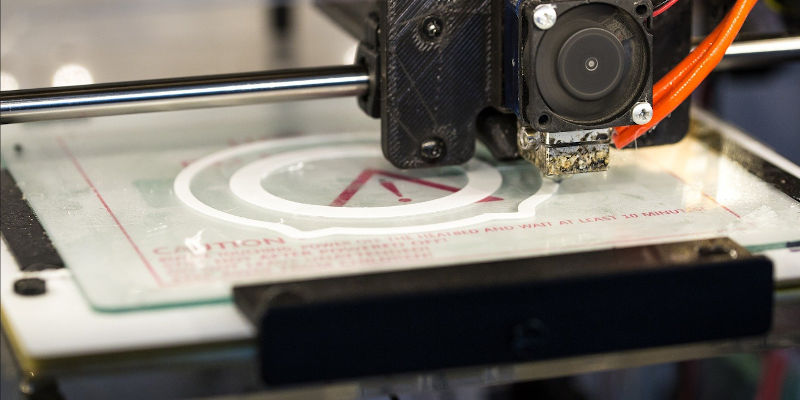
Upgrading and replacing motors and servos on an old or cheap 3D printer can work wonders in making it quieter. If you can’t afford to replace these parts, then a routine cleaning will keep your printer in top shape to keep it running smoother and quieter for longer.
Many 3D printer manufacturers sell replacement and upgraded parts themselves, but don’t be afraid to do your own research and see if there are cheaper or better alternatives to make your 3D printer quiet.
Change the Surface
Sometimes, extra noise from a working 3D printer doesn’t come from the printer itself, rather the machine itself vibrating when in use. If you use your 3D printer in a garage or workshop, you’ll find the rattling of DIY-born debris extremely jarring.
While it’s better to keep your 3D printer on a flat and stable surface, resting the legs or base of the printer on a shock-absorbing material like rubber or sponge works wonders for bringing the overall noise levels down.
Read more: the best 3D printer tables, desks, stands
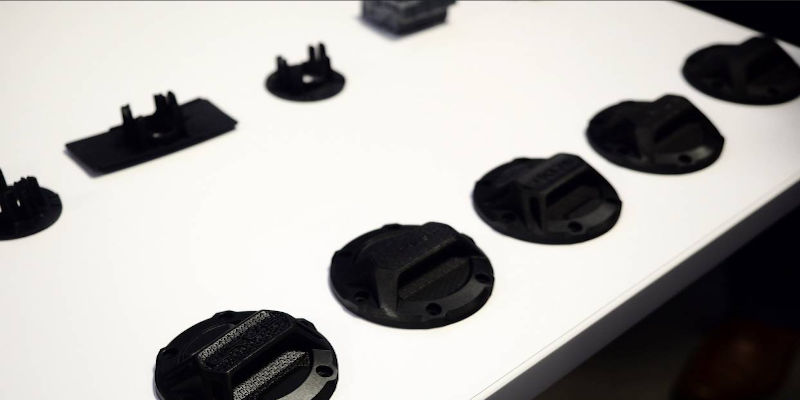
Not only is this a great and cheap way to make your 3D printer quieter, it also protects the frame from moving around and coming looser and less reliable over time. So we recommend doing this even if you already have a relatively quiet 3D printer.
Replace Smaller Pieces
It may sound too simple, but it’s true. Replacing the smaller nuts and bolts of your 3D printer frame can make for a far sturdier machine, less prone to vibrations and therefore reducing noise.
Square bolts hold better than round ones and can add years to the lifespan of the frame. Polymer bearings are far more shock absorbent than metal ones, and cork gaskets, when added to the motor, make the inner movements far less abrasive.
Little changes, if made well, make for a significantly quieter 3D printer, and they’re pretty cheap to boot!
